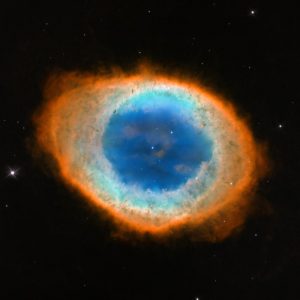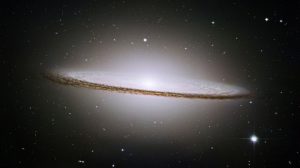
Charles Messier was a French astronomer that was born on June 26, 1730 and died on April 12, 1812. He grew up in a family that was well off until his father died, and he had to withdraw from school due to a lack of money. He was then home schooled by his brother, and later was employed by the astronomer of the French navy. He was later made a fellow of the royal society in 1764, and in 1769 he was elected to be a foreign member of the Royal Swedish Academy of Science. Messier is buried in Paris, France, and his grave is close to the pianist and composer Frederic Chopin.[1]
As an astronomer, Messier’s goal was to find comets. At the time, he wasn’t using the best tools to find them.These tools included a telescope that wasn’t nearly as powerful as the ones that are used by astronomers today, and in one case, some incorrect calculations by his mentor[1]. While observing the night sky, Messier would see lots of fuzzy and dim objects, but since he wasn’t using a very powerful telescope, he had no way of really being sure what those objects were. During his life and astronomical observations, Messier learned that some of these objects weren’t actually comets. He compiled his findings in a catalog titled ‘Not Comets’. Today this catalog is known as the Messier Catalog. We know it today as a listing of the brightest galaxies, nebulae, and star clusters.

The thirteen comets, while an important contribution, pale in comparison to the complete Messier Catalogue which contains 110 objects.[2] Messier didn’t discover them all himself, but he is the one who started the list, and discovered 40 of the objects himself. Some of the objects had been already discovered, and others were added to the list later. The final entry into the Messier Catalogue was made in 1967 and was a dwarf elliptical galaxy hiding around the Andromeda Galaxy (M32).[1]
However, astronomy in 1967 was a lot more advanced compared to astronomy in the 18th century. Messier for one, would be looking out of a telescope that was not nearly as powerful compared to what we have now. On top of this, he never left Europe and so was stuck looking at one part of the sky- which means that his observations mostly apply for observers in the northern hemisphere. It wasn’t like how today we can just compare different parts of the sky and discuss why and how they look different. But since we can, it’s all the more reason to!
The catalog itself is a great guide for novice astronomers to use if they want to see various kinds of objects in the sky- get your hands wet in a sense. Since it covers a wide range of objects, the ideal thing to do is select the objects that are best to view at a certain time at your location. The best time to view these objects is at night- but specifically when they are directly above your location, or as close as they get to being directly above you. The colder the night the better, since that means that the air will be clearer, and you can get a better glimpse of what is going on.

To give you an idea of what you would be looking at, the catalog consists of 12 nebulae, 43 galaxies, 53 star clusters, a double star, a four star system, and a part of our own galaxy, The Milky Way. [1]
[1] : Wikipedia Article on Charles Messier
[2]: Nasa article on Charles Messier
Images from nasa.gov